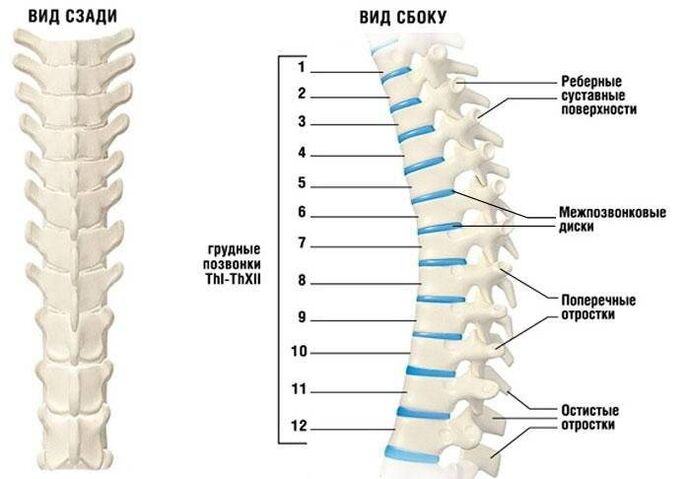Currently, according to medical statistics, almost everyone over 25-30 years of age complains of cervical osteochondrosis symptoms.The disease affects the spine more often than others.Pathology is a progressive degenerative process that affects the intervertebral disc and the vertebra located around the neck.The disease is common in men and women.This is a harmful form of osteochondrosis and complex, as the large blood vessels that supply the brain and a large number of nerve endings are located around the neck.Violation of the flow of conservation and blood leads to the deterioration of the brain for oxygen and nutrients.

The signs of the disease
Symptoms of cervical spinal osteochondrosis are more significant than other parts of the spinal cord, even with minor damage.This is due to the fact that the neck of the vertebra is located near each other, and the intervertebral disc has a small height.Such anatomical features contribute to the fact that with osteochondrosis, nerve endings, spinal cord, blood vessels are more frequently compressed.
General symptoms:
- Pain syndrome;
- weakness and decrease in sensitivity at the top;
- neck mobility restrictions;
- violations of movement coordination;
- frequent dizziness;
- general weakness;
- The deterioration of perception organ function (hearing, vision, touch, taste).
The pain is more frequent in the neck, giving them back to the head, shoulders, arms.The upper body is sick if the nerve spine is pinched by a damaged vertebra, which is responsible for their preservation.The pain in the back of the head is caused by the spastic contraction of the neck muscle that is affixed to the occipital bone, and a violation of blood circulation in this area.
Hand weakness is observed in patients if the nerve spine is involved in the pathological process that ensures the preservation of the upper limb muscle structure.Mobility recovery and characteristic crisis when the neck is rotated or leaning if bone growth appears on the cervical vertebra, the height of the intervertebral disc is reduced, the joints located between the affected vertebrae.
The vertebrae in the neck has a horizontal process that forms the canal in which the artery that consumes the brain.With cervical spinal osteochondrosis, the vertebrae is transferred, the connective tissue develops on them.This leads to the compression of the cervical artery, the deterioration of the blood supply to the cerebellum and the back of the brain.As a result, one has frequent dizziness, movement coordination, general weakness is disrupted.In advanced cases, if the artery is involved in the pathological process or is highly rejected, then the blood supply of the cerebellum, the occipital and brain stems are increasing significantly.In this case, the function of the hearing and vision, numbness of the tongue and fingers is reduced.
The signs of the disease depend on which eight vertebrae are affected by the dystrophic or inflammation process.Disruption of sensitivity and movement causes damage to the cerebrospinal root where certain vertebrae affects.Depending on this, the following manifestations of cervical osteochondrosis are observed:

- The first vertebra - neck and occipital parts of the head are numb, their sensitivity decreases;
- The second pain in the crown and the nape is felt;
- The third pain is felt and the sensitivity is reduced to the neck where the spine is squeezed, the intensity of the sensation is reduced, and the speech disorders are present;
- The fourth pain radiates to the shoulder, scapula, the patient is disrupted by heart disease, respiratory disorders, and reduced neck muscle tone;
- Fifth - pain is observed in the neck, given to the outer surface of the shoulder;
- Sixth pain in the neck is transmitted into the shoulder blade, felt on the arm and thumb;
- Seventh - pain given to shoulder blades, shoulders, arms and fingers (from second to fourth);
- Eighth - pain spread from neck to shoulder, lower arm and small fingers.
Depending on the prevalence of lesions, four degrees of cervical spinal osteochondrosis are different.This is not the level of the disease, but the severity of the symptoms, because of the common pathological process, what the vertebrae affects.
- In the first stage, clinical symptoms are not present or indicated in a minimum.Patients complain of slight pain, increasing during head movements.The treatment that starts at the level of the disease will be effective.However, people often ignore symptoms that interfere or do not feel it, so they do not consult a doctor.
- Disadvantages of pathological processes improve symptoms.In the second stage, the pain becomes more prominent, give it to the upper limbs, the shoulder blade.At this stage in the development of the degenerative process, the height of the intervertebral disc is reduced, resulting in nerve fibers.This is the cause of the growing pain.The second stage of the cervical area osteochondrosis is characterized by the appearance of headaches, deterioration in well -being, decreased work capacity.
- The third stage of cervical osteochondrosis is distinguished by the formation of the affected intervertebral disc hernia.Neck mobility is limited, with the palpation of the patient feeling severe pain.With the spread of this pathological process, the pain becomes constant, radiating to the upper limbs.Muscle tension that is affixed to the occipital bone is felt.Patients complain of frequent dizziness, general weakness, numbness.
- The fourth stage of cervical osteochondrosis is diagnosed when the intervertebral disc is completely destroyed by the dystrophic process.It is replaced by fibrous tissue, leading to significant mobility limitations.The spinal cord and blood vessels flying around the neck are affected.Such changes are characterized by significant deterioration in blood supply to cerebellum and brain occipital.Oxygen starvation leads to violations of movement coordination, hearing loss, vision, language, speech disorders.
Method of treatment
Seeing a doctor when the first alarming symptoms appear, unpleasant sensations in the neck, reactions from the nervous system will prevent the development of degenerative changes.Treatment of cervical osteochondrosis consists of complex therapeutic steps.Between them:
- taking medicine;
- Massage;
- Physiotherapy physical education;
- Physiotherapy procedure.
Drug therapy
Doctors prescribe anti -inflammatory drugs to reduce the intensity of pain, reduce the process of inflammation and swelling of the spine.Chondroprotectors restore damaged cartilage tissue in the intervertebral disc.Musorelaxants loosen the neck muscles, relieving cramps.Medications to increase blood flow help to continue blood supply to the brain.Vitamin B activates metabolism in nerve tissue.With intense pain, doctors can prescribe analgesic medications.If the patient has a clear pain syndrome, the analgesic is parentally inserted, after the pain subsides, they switch to the tablet.
Physiotherapy method
Physiotherapy is an effective way to combat cervical area osteochondrosis.It is important to treat the disease using the technique, as the following results are achieved:
- The intensity of pain decreases;
- Bone recovery, cartilage and affected muscle tissue are activated;
- Cramps and tension in the muscles are removed;
- The process of inflammation is stopped;
- Delivery of oxygen and nutrients to the affected area and the brain improves.
The most effective in the treatment of osteochondrosis is the following type of procedure:
- Drug electrophoresis (affected area acts with electrical shock, which, in addition to activating blood flow and tissue recovery, increases the delivery of drug -acting substances to the degenerative process);
- Ultrasound therapy (metabolic processes in the diseased area activated, reduced pain, inflammation stopped);
- Magnetotherapy (relieves swelling of the affected area, which helps reduce the intensity of pain);
- Laser therapy (improves blood circulation in the pathological process, has an anti -inflammatory effect).
Physical Education Medicine
Training is set during the period when the acute manifestation of the disease is stopped.During gymnastics it cannot be felt discomfort and pain.This complex should be done when it comes to continuous forgiveness to prevent relapse.

- Take a position in your stomach, lift your head and body, leaning in your hands.His back is straight, his breath is deep and even.Run in a position for a minute or two, then slowly take the starting position.The number of repetitions is 3.
- The position is located in the stomach, hands throughout the body.Slowly turn your head on, try to touch your ear to the floor.Repeat 6 times on each side.
- Sit down or stand, tilt your head on inhalation, try to the chin to the chest.In breathing, taking your head smoothly, raising your eyes to the ceiling.The number of repetitions is 10-15.
- A good exercise to strengthen the cervical muscles is to press the forehead against the hands pressed on it.To achieve its effect, you need to press the palms on the forehead and forehead in your palm for 30 seconds.Repeat three times.
- Rotate your head in a circle.Do a slow, smooth exercise.In each direction - 10 revolutions each.Dizziness during movement is unacceptable.If this happens, you should stop immediately.
Massage
This course is prescribed by a doctor in the absence of acute illness, only experts with medical education can perform it.With such a disease, it is not recommended to contact non -professional.
Therapeutic effects of collar area:
- Blood and lymph flow in the affected area increases;
- muscles rest, cramps are removed;
- The intensity of pain decreases.
Surgical intervention
This operation is indicated if conservative therapy does not lead to the results within six months, the patient is tortured by severe pain, signs of damage to the nerve fibers and myelopathy are observed.If the cervical area osteochondrosis continues the complication, there is a stroke threat, there is a strong recorder from the spinal cord, then the operation is required.
According to the clues, they use the following surgical intervention:
- Endoscopic discoctomy - removal of the entire intervertebral disc or disc;
- Laminotomy - isolation of bone ligaments and particles - too much bone tissue (often combined with laminoplasty - the establishment of an artificial plate to develop the spinal cord);
- Disc nucleus laser vulnerability - intervertebral disc nucleus breakdown with laser beam simultaneously with destroyed debris;
- Cold nucleoplasty -plasma -No endoscope, long and thin hollow needles are used, introduced into the intervertebral disc, a cold effect of electrodes is conveyed through the destruction site.
The neck is a complex organ where the blood vessels, the spinal cord.They are easily damaged, so they use surgery in no more than 5% of cases.Surgical treatment is often accompanied by the development of complications.Between them:
- the process of inflammation in the tissue or spinal cord;
- osteomyelitis;
- The formation of scars leads to narrowing of the artery and spinal cord.
The operation of the cervical spine is complex and requires a long recovery period.The recovery of patients after surgery takes six months or more.
Prevention
To prevent the development of cervical osteochondrosis, it is necessary:
- Monitor the position of the spine and neck;
- leading an active lifestyle, moving more;
- When performing physical training, be careful, to observe the accuracy of the implementation, as even minor injuries can affect the condition of the musculoskeletal system;
- Maintain the right body position during sleep, buy orthopedic or anatomy;
- Correctly complete the workplace where one spends a lot of time;
- frequently involved in physical culture;
- Monitor diet, make sure the acceptance of all the useful minerals needed for bone fort, especially magnesium and calcium;
- Always undergo a dispensary exam for timely detection of osteochondrosis.
Prevention will help prevent degenerative changes in the cervical spine, protect against pain, dizziness, limbs and unpleasant symptoms.

















































